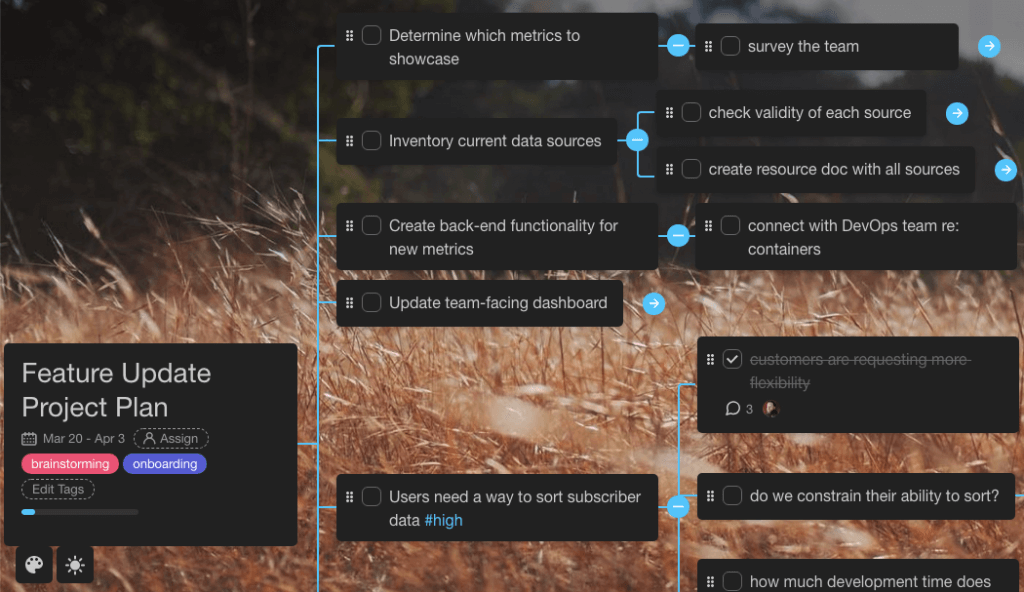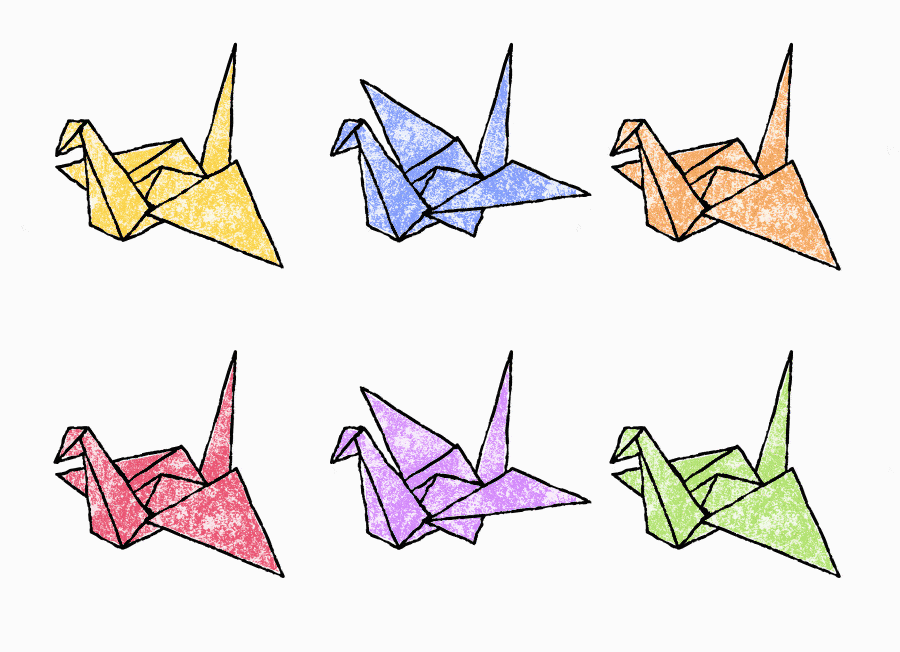Figuring out collaborative task management is an important step toward building better products. When your team has a long history of working together, chances are they can communicate and get work done with minimal friction.
But sometimes, each member of your team may come from a different background. They bring unique sets of skills and experiences, all of which make successful collaboration a tad more challenging. 🤔
In this Taskade article, we’ll show you how you can master collaborative task management with the Origami method. You’ll also learn why origami is better than LEGOs and…some other interesting things!
So, without further ado, let’s dive in. ↘️
🧱 What Are LEGO-Style Collaboration Tools?
Collaborative task management is the idea that each team member should be involved with product and project planning from the very beginning. 🤝
Traditionally, team collaboration tools try to manage this process by providing users with “building blocks” that let everybody “assemble” their own productivity systems from scratch. We call these LEGO-style tools.
With LEGO-style task management, you first look at each block (or task) individually, then figure out how they fit together to create the completed model. Each task is independent of one another, which you can see in their instructions:

Each instruction is broken down to show only the blocks required for that one step. Doing this leaves room for confusion and over-complication—your team isn’t thinking about how each individual task works toward the completion of the entire project. Someone on step 5 won’t know what blocks are required for step 42.
While these building blocks are effective at providing your team with options, the amount of customization invites unnecessary complexity. The lack of constraints also makes it easy to create clunky workflows that decrease team efficiency. 💥
Which takes us to another problem.
When your team builds a LEGO-style workflow and uses it long enough, it becomes hardwired. It’s very difficult to painlessly change a limping task-management routine without tearing everything down and rebuilding. 🧨
That’s why we prefer to think about building task management systems as Origami. It’s a holistic approach that helps you think critically about your project plans, tracking the individual steps that brought you to a completed model.
🦢 Collaborative Task Management Is More Like Origami Than LEGOs
Traditional origami (Japanese ori “folding” + kami “paper”) is the process of folding a single sheet of paper to create intricate models, animals or buildings. Origami teaches you to look at a square sheet of paper critically and plan out the necessary folds to create a completed model.
In origami, the brainwork happens during the planning stage. When you’re working with a single sheet of paper, each fold has to be executed at exactly the right time to complete the model. Just look at the intricate models of physicist and origami master Dr. Robert J. Lang:

To construct such a complex model, Dr. Lang creates a crease pattern that showcases each individual fold that goes into the completed model. If you think about the model as a project, every fold is a task.

Each line in the crease pattern represents a different type of fold, its relationship to other folds, and how it fits into the model as a whole. This “map” creates a holistic picture of every individual task an origami folder needs to perform. It’s also an apt metaphor for project planning and task management.
💡 For collaborative task management to work, each member of your team needs to adopt the origami method’s holistic thinking. This thought process creates a framework for understanding how each team member’s contributions (folds) combine to complete the model. In other words, it means that everybody has a direct connection to goals and intended outcomes of a project.
Staying directly connected with outcomes increases accountability and helps everyone move projects forward together. 🏃🏾🏃🏻♀️
✂️ Origami’s Boundaries = Better Collaborative Task Management
Another important difference between origami and LEGO-style task management is the presence of boundaries.
Everybody loves LEGOs. There’s no doubt about that. But because they provide limitless opportunities for customization, they can be overwhelming. With thousands of assorted pieces, it’s difficult to hone in on one, unified project. ❌
💡If your team thinks about a project in terms of LEGO building blocks, each task is an individual brick—it’s disconnected from every other brick on the table. In other words, LEGO-style tools encourage a dispersed model that feels more like connecting the dots than following an organized sequence.
The origami method, on the other hand, encourages your team to consider how each task relates to another and how they compound ✅➕ ✅ to make subsequent tasks easier. It’s built on an inherent structure that makes it easy to organize important company information and get things done.
Let’s say you’re working with your development team to update the user interface (UI) for an internal analytics tool. Here’s what that project plan might look like at the start:
The goal of this project is to update the UI for an internal analytics tool to make gaining insight into high-value metrics more efficient. 🎯
How do you ensure that every member of the team understands this direction? By providing them with the tools they need to visualize individual tasks and how each task relates to the project as a whole.
In Taskade, we think of each custom template and project as a single sheet of paper, which can be visualized in a number of different ways.
Each view is “foldable” into different shapes or models, making the project information easily available as a Kanban board or an action plan, depending on who’s viewing it.

This ensures that everyone is working from the same playbook and cuts down on the need for the back-and-forth context-setting that can kill productivity for a remote team. Basically, each view provides a holistic overview of a project, like the origami crease pattern we showed you earlier.
With a LEGO-style tool, you wouldn’t be able to have a singular reference point. Each member of your team would only see the individual bricks (tasks) they’re working on at any given time. This would lead to decreased visibility into how their individual work impacts the rest of the team.
Just think how difficult it would be to move our example UI project forward if your team started working on the dashboard before making an inventory of data sources. You get the picture. 🤯
💡 Being able to view the same information in a number of different ways helps you create a single source of truth your team can actually use.
Origami’s inherent structure means you can fold and unfold the information to find which patterns work best without breaking the constraints of a single sheet of paper.
🐑 Using Taskade for the Origami Method
We designed Taskade with the origami method in mind. In each workspace, you can cycle through a number of views based on the individual needs of your team.
This provides your team with the flexibility they need to parse information quickly without changing the physical structure of the information itself. This is built into the data level of our product, with each space or subspace consisting of a single database.

Giving individual team members the ability to visualize data in different ways helps them organize and absorb key information. You’re able to look at everything involved in a project from both a top-down and bottom-up perspective.
💡 A holistic viewpoint makes it easy to track how everyone’s individual contributions move projects forward to a single goal. Showcasing data as a single sheet of paper ensures project managers are able to easily keep track of overarching goals as well.
Flexible views in Taskade also help you find novel insights by looking at the same project, roadmap, or task list from a different angle. Simply changing the view from a Kanban board to a mind map can help you see the connection points between tasks easier.


Another benefit of this origami structure is the ability to change between views in real time. Why force your team to work through a mind map when all they need is a simple checklist? Each person can visualize the information locally in the way that’s best for them. 👓
The origami method fosters a culture of visibility and accountability where each contribution gets proper exposure. That helps your team work better together, especially in distributed workforces. Active participation is also a key part of the digital IKEA effect, so your team is building better habits as they collaborate in Taskade.
👩🏻🏫 Teach Your Team the Origami Method
1️⃣ When your team thinks about collaborative task management as origami instead of LEGOs, they can see the underlying structure of any project. And by putting in much of the brainwork upfront, executing tasks becomes much simpler as they move through the project.
2️⃣ For more complex tasks, the origami method helps your team create efficient workflows. Understanding that dependencies are a part of the process makes it much easier to find the best path forward.
3️⃣ Unfolding—stepping back to regain context—the model at key points along the roadmap also makes it easier to build a comprehensive understanding of how each individual person’s work impacts the model as a whole. It brings the team together and ensures they’re always headed in the same direction.
If you’re tired of mismatched LEGOs and clunky workflows, we have a solution. With Taskade, your team can embrace all the benefits of the Origami method and get more work done together! 🐑🐑
🤖 Custom AI Agents: Deploy AI agents to automate routine tasks. Agents free up team members to focus on more creative tasks.
🪄 AI Generator: Speed up the creation process with natural-language prompts. Use AI to generate reports, presentations, and documents.
✏️ AI Assistant: Use GPT-4 Turbo to improve scheduling, write emails, and edit documents with handy /ai commands available in the editor.
🗂️ AI Prompt Templates Library: Find the right AI prompt in seconds. The catalog includes prompts for personal and work projects.
And much more…


